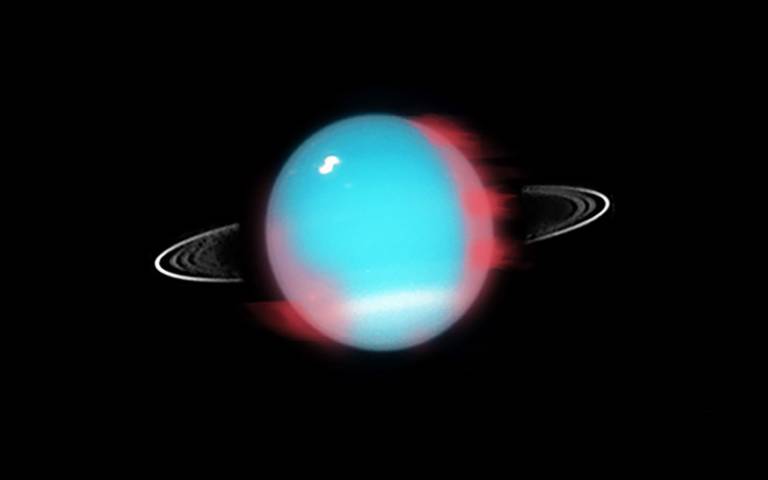Planetary scientists including UCL's Professor Steve Miller have detected the infrared aurorae of the ice giant Uranus after searching for more than 30 years, in a new study published in Nature Astronomy.

On Earth, the Northern and Southern Lights (aurorae) occur as a result of the interaction between the stream of charged particles known as the solar wind and our magnetic field, which funnels the particles in our atmosphere around the poles. Planetary aurorae are vital indicators of the way this interaction works on distant worlds.
Infrared emission from Uranus due to the simple molecular ion H3+ was first detected in 1992 by astronomers including Professor Miller (UCL Science & Technology Studies) and Professor Jonathan Tennyson (UCL Physics & Astronomy), using one of the large telescopes on the Mauna Kea Observatory in Hawaii to explore the icy giant.
The current team, led by Leicester University PhD student Emma Thomas, finally managed to localise the H3+ emission to find areas of actual auroral emission. These are likely to map to the position of the planet's magnetic poles, and could hold the key to determining Uranus's rotation rate, which is not sufficiently well known for longitudes there to be specified precisely. Even if we could define the equivalent of our Greenwich Meridian on Uranus today, its position would be completely lost in just over three years.
Lead author Emma Thomas said: "A majority of exoplanets (planets orbiting stars other than our Sun) discovered so far fall in the sub-Neptune category, and hence are physically similar to Neptune and Uranus in size. This may also mean similar magnetic and atmospheric characteristics too."
Professor Miller added: "This is a great result. Thirty years of studying Uranus has given us hints of the infrared aurorae, but this work has finally found it. I'm so pleased to have been part of pioneering this work and to have been in at the end as well - we're opening a new avenue in planetary science that has implications for our solar system and beyond."






